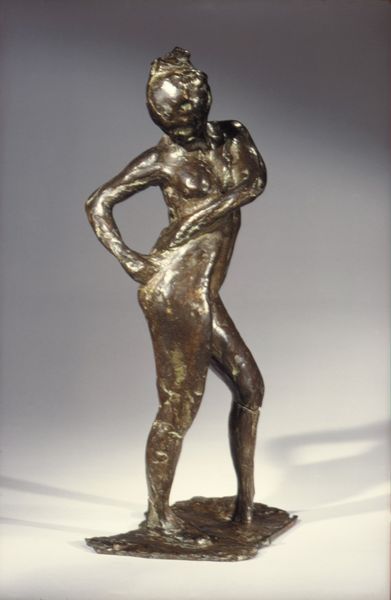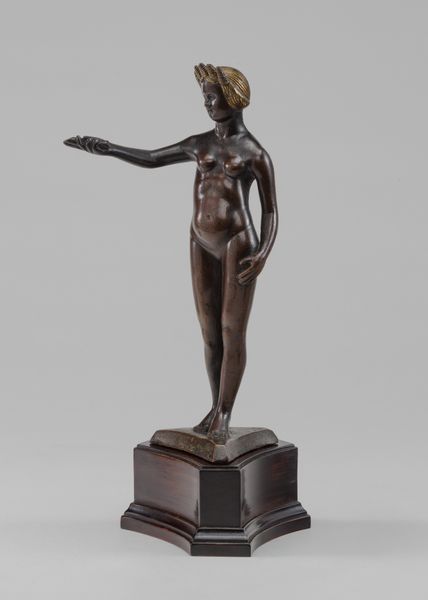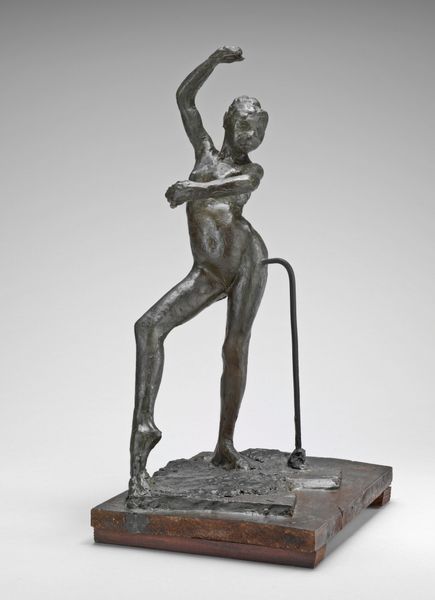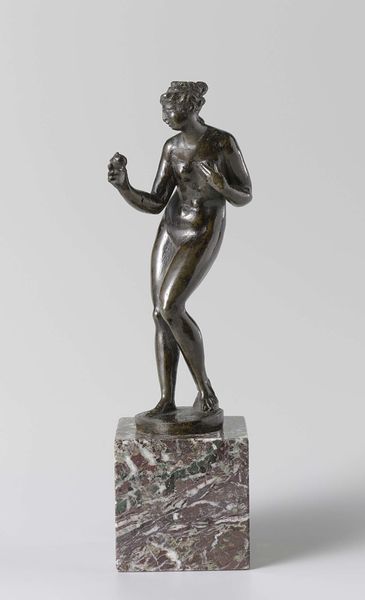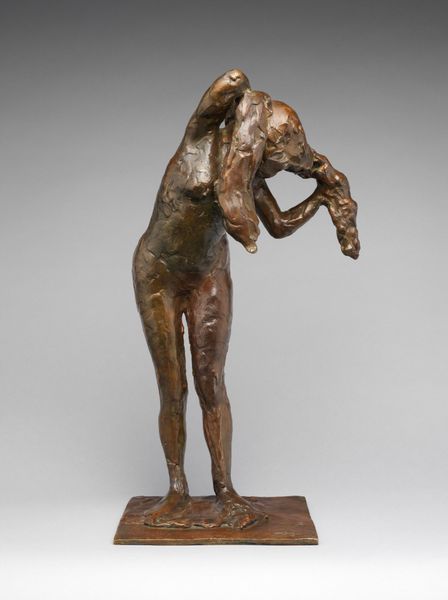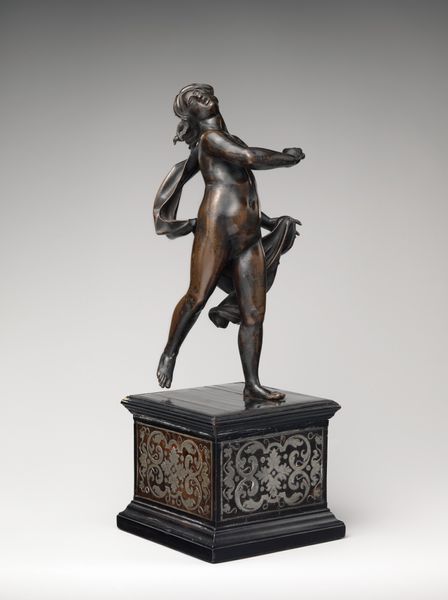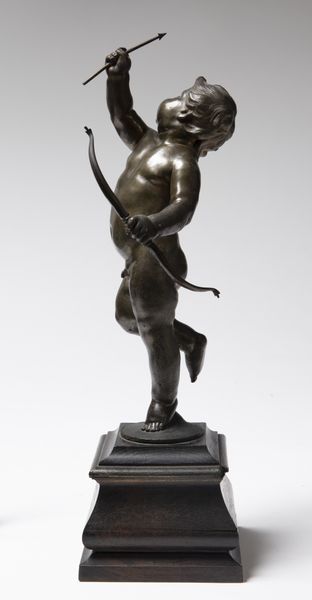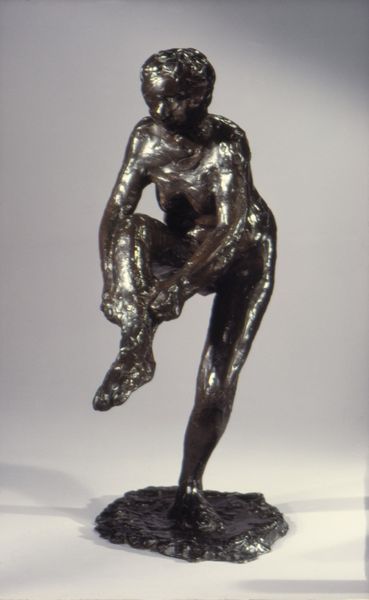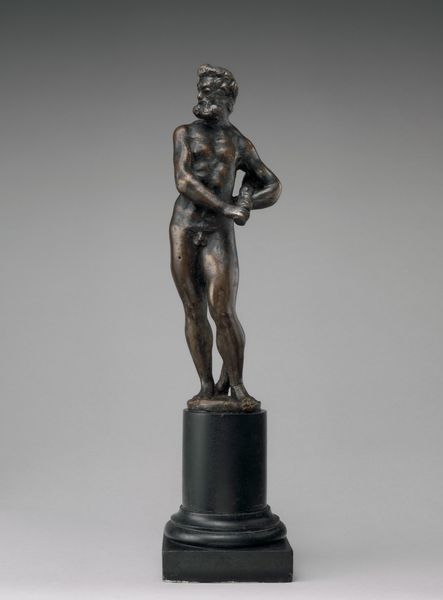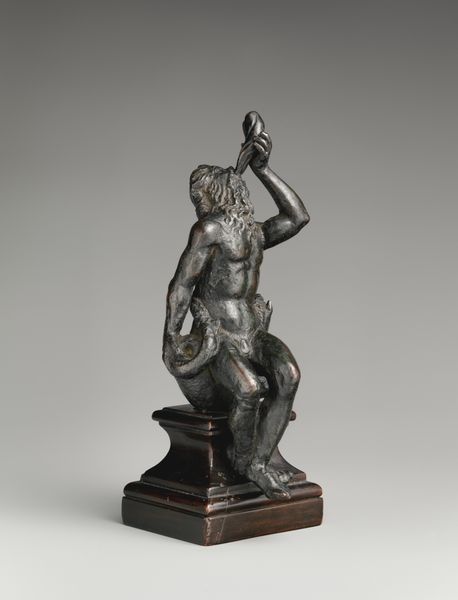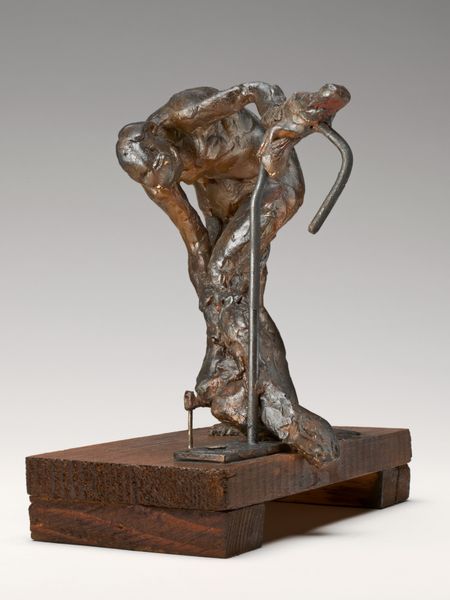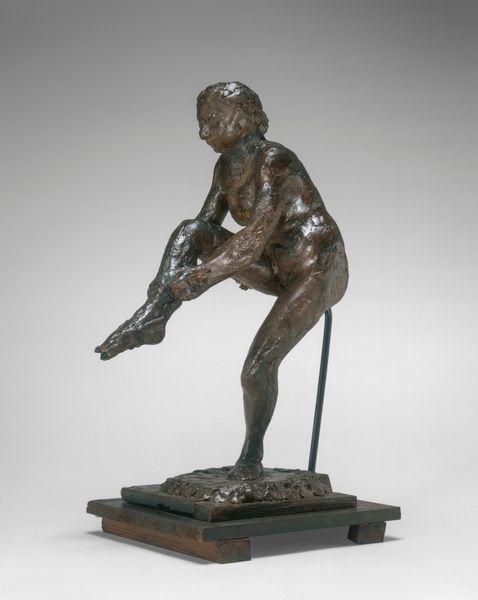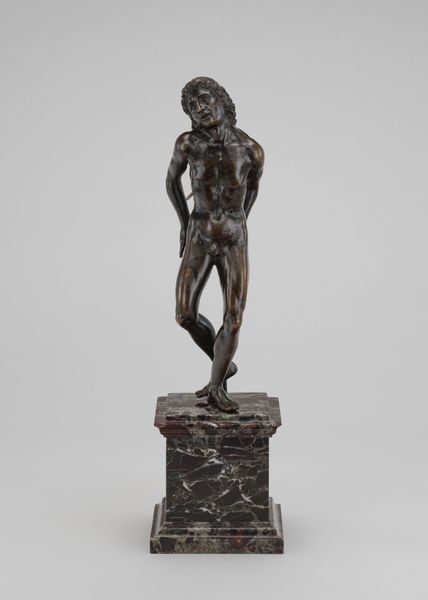
bronze, sculpture
#
kinetic-art
#
sculpture
#
bronze
#
figuration
#
geometric
#
sculpture
#
futurism
Dimensions: 47 3/4 × 35 × 15 3/4 in., 200 lb. (121.3 × 88.9 × 40 cm, 90.7 kg)
Copyright: Public Domain
Editor: Here we have Umberto Boccioni’s “Unique Forms of Continuity in Space,” a bronze sculpture created in 1913. Its burnished surfaces give a beautiful sense of motion, and its fragmented form communicates a figure striding powerfully forward. What is your take on this dynamic piece? Curator: Formally, the sculpture operates as a study of movement rendered through the manipulation of the bronze medium. Note how Boccioni eschews traditional anatomical representation, opting instead to deconstruct the figure into a series of flowing, aerodynamic planes. Do you observe how the curvature interacts with the angularity, creating an almost chaotic yet harmonious whole? Editor: Yes, I see what you mean. The way the light plays on the surfaces enhances that sense of shifting forms. Curator: Exactly. Light becomes an active participant, further dissolving the solidity of the form. Boccioni masterfully uses positive and negative space to evoke not just the figure but the very air it displaces. The work transcends simple figuration to become an exploration of the fourth dimension—time. Consider how the semiotic reading allows insight into Boccioni's intentions through symbolic depictions of motion and emotion through geometry. Editor: That's fascinating! It’s not just about a figure moving, but about visualizing the concept of movement itself. I can see now the sculpture invites us to imagine the air currents. Thank you, that perspective adds so much. Curator: The Futurists were always interested in revealing the dynamism inherent in modernity. This piece pushes the boundaries of sculptural form, even now.
Comments
No comments
Be the first to comment and join the conversation on the ultimate creative platform.
